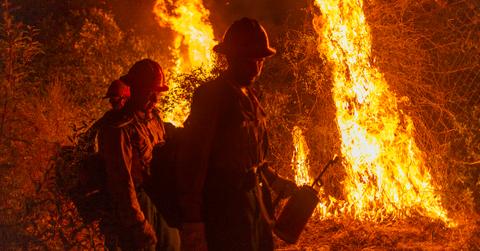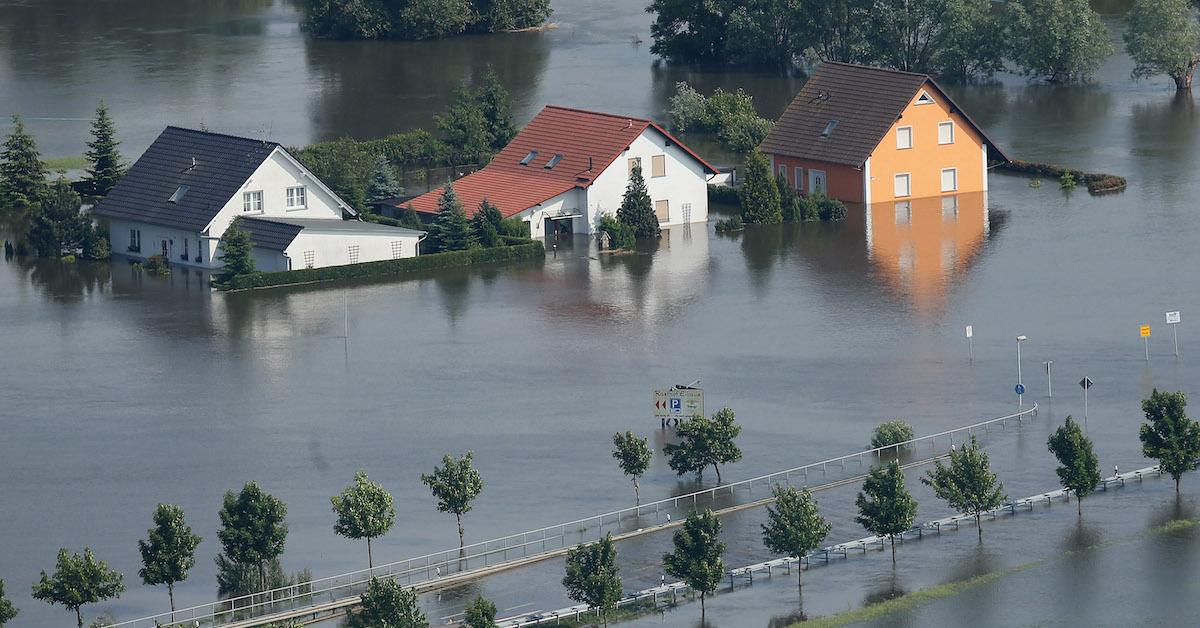As Climate Mitigation Efforts Stumble, We Need Climate Adaptation More Than Ever
Published Nov. 3 2022, 12:27 p.m. ET

Mill Creek Hotshots set a backfire to protect homes during the Bobcat Fire on Sept. 13, 2020 in Arcadia, Calif.
For decades, scientists have been saying that we need to make efforts to stop the climate crisis in its tracks. But as the climate emergency continues to get worse, it’s clear that many are tragically content with ignoring that advice. So instead of mitigation (or ideally, alongside mitigation) we must ramp up climate adaptation. But what does adaptation to climate change involve, exactly?
The United Nations just released a new report about this topic, and found that the planet is far behind on its climate adaptation targets — but there is still time for us to get there. Keep reading to learn about the report’s findings, as well as for a breakdown of climate adaptation and mitigation.

Houses and a road stand partially submerged in floodwaters from the Elbe river on June 12, 2013 in Fischbeck, Germany.
What is climate change adaptation and climate mitigation?
According to NASA, experts believe that addressing the climate crisis requires two things: climate mitigation and climate adaptation.
Climate mitigation involves taking action to reduce emissions that contribute to global heating and other aspects of the climate crisis, as well as leveling off the current greenhouse gases in the atmosphere that contribute to global heating.
Climate adaptation involves adjusting the world to the ways that climate change is already affecting the planet, in order to protect humanity from the harmful effects of the climate crisis. The climate crisis is already causing rising global temperatures, rising sea levels, an increase in weather disasters such as hurricanes, wildfires, and droughts, and so much more.
But how can we do this?
What does adaptation to climate change involve?
Adapting to climate change requires making changes to our infrastructure, behavior, schedules, and more, in order to safeguard ourselves from climate breakdown.
Examples of climate adaptation include: developers having to build homes and buildings farther from coasts; firefighters needing to contend with worse forest fire seasons; farmers being forced to make adjustments to their growing seasons; and governments building infrastructure and shelters to protect people from extreme weather disasters.
The UN Environment Programme (UNEP) published the Adaptation Gap Report 2022 on Nov. 1, 2022, with the subtitle “Too Little, Too Slow – Climate adaptation failure puts world at risk.”
The report declared that we on Earth need to "urgently increase efforts to adapt to these impacts of climate change." It found that about 84 percent of the UNFCCC’s 198 parties set up plans for adapting to climate change, with more countries improving in prioritizing Indigenous peoples and other vulnerable groups.
However, only about a third of the UNFCCC’s 198 parties have established “quantified and time-bound targets” to achieve sufficient climate adaptation, and only half of the 84 percent of parties have set up at least two planning instruments to actually achieve these targets.
Hopefully the UNEP’s new report will help galvanize countries all around the globe — especially those responsible for the highest emissions — into taking stronger climate adaptation measures.
Climate Mapping for Resilience and Adaptation can provide your community with tools to adapt to climate change.
In Oct 2022, the U.S. government launched Climate Mapping for Resilience and Adaptation (CMRA), a platform that uses government data to help U.S. residents “consider their local exposure to climate-related hazards.” It can also help people create climate resilience plans that will help equitably protect people and infrastructure from climate change.
The tool is tailored to people who work for community organizations, governments, or Indeingeous tribes anywhere in the U.S., and the website also includes information on how to apply for federal grants to help with climate resilience and adaptation projects.